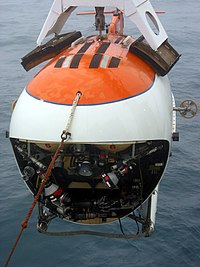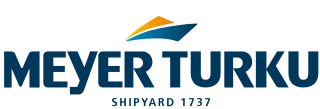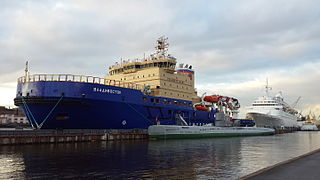
The Finnish maritime cluster is a cluster of Finnish companies in maritime industries. In 2016 the total turnover was estimated at 13 billion euros and it employed 48,000 people. [1]

The Finnish maritime cluster is a cluster of Finnish companies in maritime industries. In 2016 the total turnover was estimated at 13 billion euros and it employed 48,000 people. [1]
Small trading ships similar to Jacobstads Wapen were built in Finnish coastal towns in the 18th century. Small-scale shipyards continued to exist well into the 20th century. The first large scale shipyard was the galley dry dock at Sveaborg built in the mid-18th century, which serviced the ships that won one of the largest sea battles in Finnish history.
The first industrial scale shipyard in Turku was established in 1732. After the Crimean War, William Crichton acquired a workshop and built a new shipyard, which later absorbed smaller shipyards and developed into Crichton-Vulcan and merged with Wärtsilä between 1936 and 1938. Germany outsourced a notable amount of submarine construction to Finland after World War I. This section of industry was later outlawed by the Paris Peace Treaty, but it became an important foundation for the Finnish maritime industry. [2]
A major boost to Finnish shipbuilding was the war reparations paid to the Soviet Union after World War II. They forced a rapid industrialization of Finland and the creation of a large metal industry in addition to the traditional papermaking and forest industries. [3] By 1953, the shipbuilding industry had six times the capacity it did in 1944. [4]
Bilateral trade with the Soviet Union forced Finnish shipyards to build ships with a high percentage of total value of Finnish origin.[ citation needed ] All major components of the finished products needed to be produced domestically. The high percentage of domestic components continues even after the dissolution of the Soviet Union and the end of the lucrative trade deals. While ships built in other European shipyards are a collection of components from around Europe and around the world, ships built in Finland can have up to 90% of their total value in Finnish components and labor (kotimaisuusaste). [5] [6] [7] [8] [9] [10] [11] [12]




MSV Fennica is a Finnish multipurpose icebreaker and offshore support vessel. Built in 1993 by Finnyards in Rauma, Finland and operated by Arctia Offshore, she was the first Finnish icebreaker designed to be used as an escort icebreaker in the Baltic Sea during the winter months and in offshore construction projects during the open water season. Fennica has an identical sister ship, Nordica, built in 1994.

Celestyal Crystal is a cruise ship, operated between 2007 and 2023 by the Cyprus-based Louis Group's Louis Cruise Lines and Celestyal Cruises. The ship was originally built as the cruiseferry Viking Saga in the 1980 at Wärtsilä Perno Shipyard and Turku Shipyard, Turku, Finland for Rederi Ab Sally. In 1986 she was renamed Sally Albatross, and rebuilt into a cruise ship the following year. The ship was destroyed by a fire in 1990, and completely rebuilt at Finnyards, Rauma, Finland. She was re-delivered in 1992, still named Sally Albatross. After partially sinking 1994 she was rebuilt at Industrie Navali Meccaniche Affini, La Spezia, Italy, re-entering service as Leeward for Norwegian Cruise Line. Subsequently she sailed as SuperStar Taurus for Star Cruises, Silja Opera for Silja Line. After being temporarily renamed Opera she was in service with Louis Group as Louis Cristal and later Celestyal Crystal.
Vuosaari shipyard was a shipyard located in the district of Vuosaari in Helsinki, Finland. Built by the Finnish state-owned company Valmet Oy in the early 1970s, the shipyard delivered 33 newbuildings and participated in building around 100 other vessels before it was closed in 1987 following the bankruptcy of Wärtsilä Marine. Later, the longest dry dock in Finland was used by various ship repair companies until the construction of the new Vuosaari harbour cut the connection to the sea in 2004. Despite various plans to re-use the old dry dock, now located inside the harbour perimeter, it remained without use until the basin was backfilled in 2015–2016.

Hietalahti shipyard is a shipyard in Hietalahti, in downtown Helsinki, Finland. Since 2019, it has been operated by a company named Helsinki Shipyard.
SCF Sakhalin is a Russian icebreaking platform supply and standby vessel owned by SCF Sakhalin Vessels Limited, a subsidiary of Sovcomflot. The ship was built by Aker Finnyards Helsinki shipyard in Finland in 2005 as FESCO Sakhalin for Far East Shipping Company (FESCO), but was purchased by Sovcomflot and renamed in 2010. Since the beginning it has been in long-term charter for Exxon Neftegas Ltd. and used to supply oil platforms in the Sakhalin-I project.

MS Superspeed 1 is a fast ro-pax ferry owned and operated by Color Line. She was built by Aker Finnyards, Rauma, Finland in 2008, and entered service on the Kristiansand—Hirtshals route on 13 March 2008.

MS Birka Stockholm is a cruise ship owned jointly by Rederi AB Gotland and Viking Line. She was built in 2004 by Aker Finnyards at Rauma, Finland for Birka Line, later owned by Rederi Ab Eckerö, and operated under their Birka Cruises brand. She sailed as Birka Paradise until 2013.

STX Finland Oy, formerly Aker Yards Oy, was a Finnish shipbuilding company operating three shipyards in Finland, in Turku, Helsinki and Rauma, employing some 2,500 people. It was part of STX Europe, a group of international shipbuilding companies owned by the South Korean STX Corporation.
A double acting ship is a type of icebreaking ship designed to travel forwards in open water and thin ice, but turn around and proceed astern (backwards) in heavy ice conditions. In this way, the ship can operate independently in severe ice conditions without icebreaker assistance but retain better open water performance than traditional icebreaking vessels.

Turva is a Finnish offshore patrol vessel. Built in 2014 by STX Finland Rauma shipyard for the Finnish Border Guard, she is the largest vessel of the fleet as well as the first patrol vessel in Finland powered by liquefied natural gas (LNG).
Rauma shipyard is a shipyard in Rauma, Finland. It was previously operated by STX Finland which is owned by the South Korean STX Corporation. Rauma shipyard is specialized in large ferries, small cruise ships, multipurpose icebreakers and small naval craft.
Perno shipyard is a shipyard in Turku, southwest Finland, that specialises in building cruise ships, passenger ferries, special vessels and offshore projects. The yard area is 144 hectares. The yard is operated by Meyer Turku Oy. The dry dock is 365 metres (1,198 ft) long, 80 metres (260 ft) wide and 10 metres (33 ft) deep, and equipped with two bridge cranes with capacities of 600 tonnes and 1,200 tonnes. The newer bridge crane with a capacity of 1,200 tonnes is the largest in the Nordic region.

Polaris is a Finnish icebreaker. Built in 2016 by Arctech Helsinki Shipyard, she is the most powerful icebreaker ever to fly the Finnish flag and the first icebreaker in the world to feature environmentally friendly dual-fuel engines capable of using both low-sulfur marine diesel oil (LSMDO) and liquefied natural gas (LNG). Polaris was initially ordered by the Finnish Transport Agency, but the ownership was transferred to the state-owned icebreaker operator Arctia after delivery.

Moskva is a Russian Project 21900 diesel-electric icebreaker. Built at Baltic Shipyard in 2008, she was the first non-nuclear-powered icebreaker built in Russia after the dissolution of the Soviet Union.

Sankt-Peterburg is a Russian diesel-electric icebreaker. She was built at Baltic Shipyard in 2009 as the second vessel for Project 21900, the first series of non-nuclear icebreakers built in Russia after the dissolution of the Soviet Union. She has an identical sister ship, the 2008-built Moskva.

Murmansk is a Russian Project 21900M diesel-electric icebreaker. While her construction was contracted to Vyborg Shipyard in Russia, she was built at Arctech Helsinki Shipyard in Finland and delivered to Rosmorport in 2016.

Novorossiysk is a Russian Project 21900M diesel-electric icebreaker. She was built by Vyborg Shipyard in Russia and delivered to Rosmorport in 2016.

Meyer Turku Oy is a Finnish shipbuilding company located in Turku, Finland Proper. The company is fully owned by German shipbuilder Meyer Werft GmbH. The main products are cruise ships and cruiseferries.
Steerprop Oy is a Finnish company that produces marine propulsion equipment such as azimuth thrusters and bow thrusters. The company was established in 2000 in Rauma by a group of people who had previously worked at Rolls-Royce Marine Division.

Vladivostok is a Russian diesel-electric icebreaker and the lead ship of Project 21900M icebreakers. She was built by Vyborg Shipyard in Russia and delivered to Rosmorport in 2015.
Laivan kotimaisuusaste on noin 90 prosenttia.
kotimaisuusaste on 85-90 prosenttia
Projektin kotimaisuusaste on korkea.
Uuden satamajäänmurtajan suunnittelu, potkurilaitteistot, pääkoneet, teräsmateriaalit sekä suurin osa työstä tulevat Suomesta. Hankinnan kotimaisuusaste onkin korkea, arviolta 85 prosenttia.
{{cite web}}: Missing or empty |url= (help)Aluksen kotimaisuusaste on 80 %[ permanent dead link ]
hankkeen kotimaisuusaste on 80 prosenttia.
Tällaisten tilausten kotimaisuusaste on peräti 80 prosenttia.
Suomessa rakennettujen laivojen kotimaisuusaste on 80–90 prosenttia.